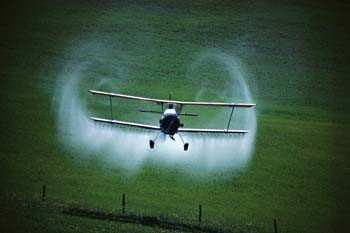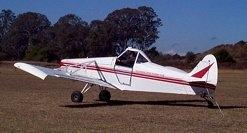Thu, May 15, 2014
Calls For Stronger Collaboration Between Regulators And Industry
The NTSB has released findings from its Special Investigation Report on the Safety of Agricultural Aircraft Operations. As a result of the safety issues identified in the study, the NTSB issued eight safety recommendations to the FAA and the National Agricultural Aviation Research & Education Foundation urging the two organizations to work together to develop and distribute agricultural operations-specific guidance on fatigue management, risk management, aircraft maintenance, and pilot knowledge and skills tests.

Agricultural operations, a niche group within the general aviation community, are subject to many safety hazards because they fly low enough to have to be concerned about obstacles such as power lines, communications towers, and meteorological evaluation towers. While these operations have historically ranked sixth or seventh among general aviation sectors in terms of hours flown, they have ranked third in terms of the number of annual accidents. Based on a review of these data and the findings from several agricultural operation accident investigations, last year, the NTSB initiated a special investigation to better understand the issues affecting the industry. During the 2013 aerial application season, the NTSB investigated 78 accidents, which included gathering information in the areas of pilot work and sleep schedules, pilot training and experience, and aircraft maintenance.
“Ag operations are inherently flown at low altitudes, often close to obstacles and hazards. That kind of flying requires rigorous risk assessment and risk management to operate safely,” said NTSB Board Member Earl Weener.

Investigators found that collisions with obstacles are a prevailing concern in the industry. In addition to the special report and recommendations, the NTSB issued a new Safety Alert, “Preventing Obstacle Collision Accidents in Agricultural Aviation.” The alert encourages ag-operators to conduct thorough preflight and aerial surveys, use technology to identify and maintain awareness of obstacles, and have a better understanding of the performance limitations and requirements of their aircraft. A companion Video Safety Alert was created and released to help inform and educate pilots, operators, and maintenance personnel.
(Images from file)
More News
Circle To Runway (Runway Number) Used by ATC to inform the pilot that he/she must circle to land because the runway in use is other than the runway aligned with the instrument appr>[...]
Aero Linx: National Aviation Safety Foundation (NASF) The National Aviation Safety Foundation is a support group whose objective is to enhance aviation safety through educational p>[...]
At Altitude Of About 250-300 Ft Agl, The Airplane Experienced A Total Loss Of Engine Power On November 6, 2024, at 1600 central standard time, a De Havilland DHC-1, N420TD, was inv>[...]
From 2009 (YouTube Edition): Three Hour Flight Was 'Flawless' -- At Least, Until Mother Nature Intervened For anyone who loves the aviation business, this was a VERY good day. Afte>[...]
Also: AMA Names Tyler Dobbs, More Falcon 9 Ops, Firefly Launch Unsuccessful, Autonomous F-16s The Air Force has begun ground testing a future uncrewed jet design in a milestone tow>[...]
 ANN's Daily Aero-Term (05.05.25): Circle To Runway (Runway Number)
ANN's Daily Aero-Term (05.05.25): Circle To Runway (Runway Number) ANN's Daily Aero-Linx (05.05.25)
ANN's Daily Aero-Linx (05.05.25) NTSB Prelim: De Havilland DHC-1
NTSB Prelim: De Havilland DHC-1 Classic Aero-TV: The Boeing Dreamliner -- Historic First Flight Coverage
Classic Aero-TV: The Boeing Dreamliner -- Historic First Flight Coverage Airborne-NextGen 05.06.25: AF Uncrewed Fighters, Drones v Planes, Joby Crew Test
Airborne-NextGen 05.06.25: AF Uncrewed Fighters, Drones v Planes, Joby Crew Test




